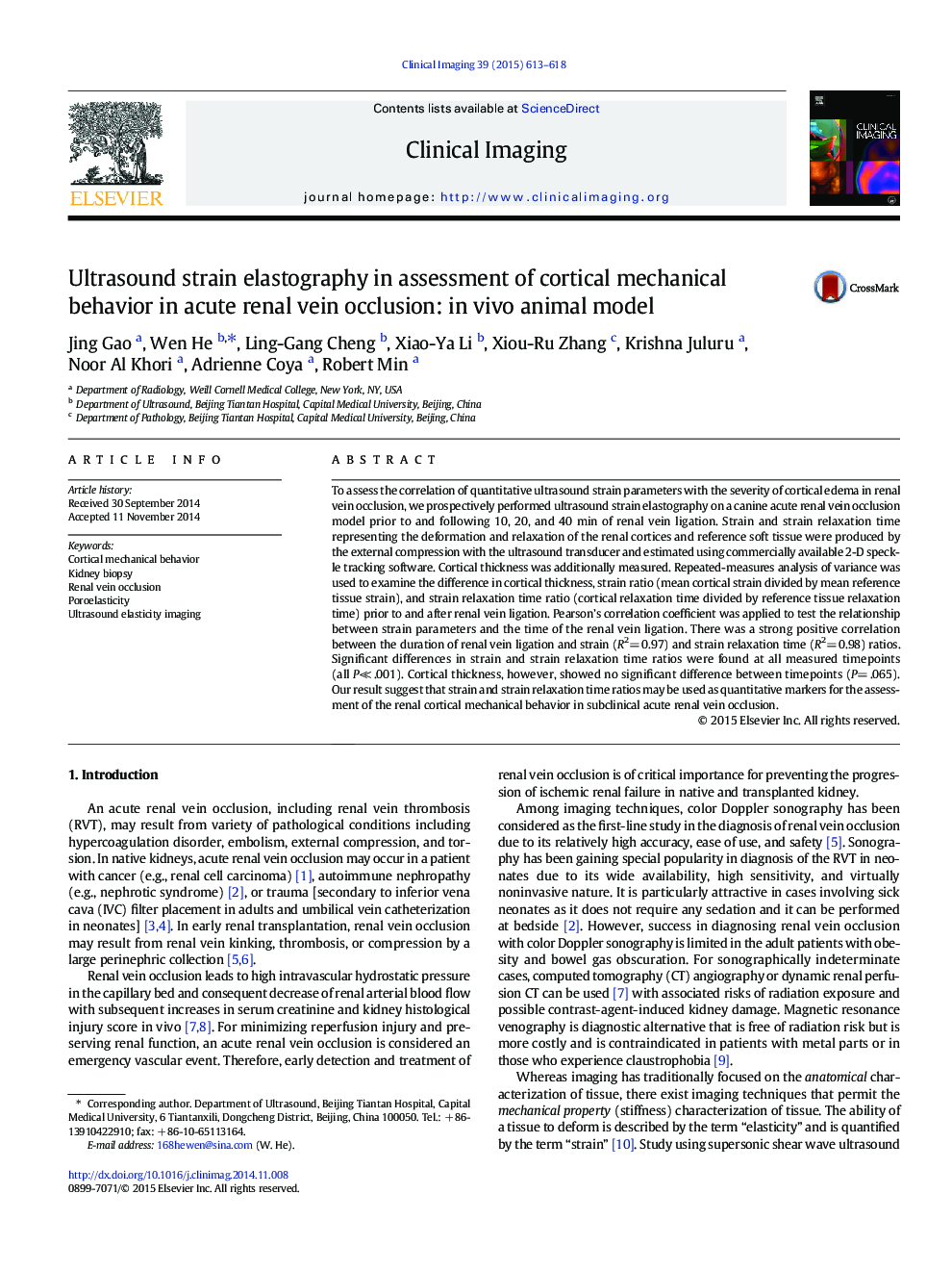| Article ID | Journal | Published Year | Pages | File Type |
|---|---|---|---|---|
| 4221156 | Clinical Imaging | 2015 | 6 Pages |
Abstract
To assess the correlation of quantitative ultrasound strain parameters with the severity of cortical edema in renal vein occlusion, we prospectively performed ultrasound strain elastography on a canine acute renal vein occlusion model prior to and following 10, 20, and 40 min of renal vein ligation. Strain and strain relaxation time representing the deformation and relaxation of the renal cortices and reference soft tissue were produced by the external compression with the ultrasound transducer and estimated using commercially available 2-D speckle tracking software. Cortical thickness was additionally measured. Repeated-measures analysis of variance was used to examine the difference in cortical thickness, strain ratio (mean cortical strain divided by mean reference tissue strain), and strain relaxation time ratio (cortical relaxation time divided by reference tissue relaxation time) prior to and after renal vein ligation. Pearson's correlation coefficient was applied to test the relationship between strain parameters and the time of the renal vein ligation. There was a strong positive correlation between the duration of renal vein ligation and strain (R2= 0.97) and strain relaxation time (R2= 0.98) ratios. Significant differences in strain and strain relaxation time ratios were found at all measured timepoints (all PâªÂ .001). Cortical thickness, however, showed no significant difference between timepoints (P= .065). Our result suggest that strain and strain relaxation time ratios may be used as quantitative markers for the assessment of the renal cortical mechanical behavior in subclinical acute renal vein occlusion.
Related Topics
Health Sciences
Medicine and Dentistry
Radiology and Imaging
Authors
Jing Gao, Wen He, Ling-Gang Cheng, Xiao-Ya Li, Xiou-Ru Zhang, Krishna Juluru, Noor Al Khori, Adrienne Coya, Robert Min,
